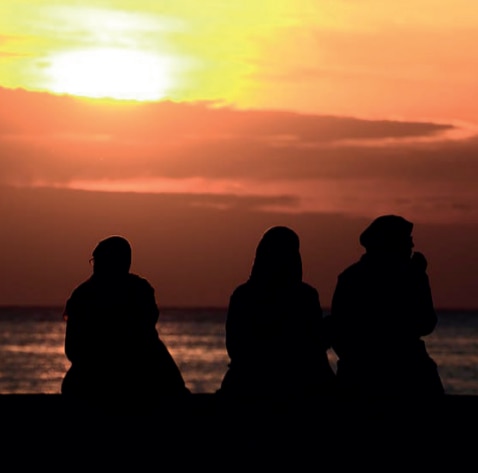Mahrukh Arif-Tayyeb, Masters Social Science, France
As a Muslim woman, I have read thousands of articles and watched a plethora of debates on the hijab. Being from France, these debates have affected me twice – first, when I realised how scrutinised the choices I make related to my faith are, and then, when I realised that choosing to wear the hijab in such a country meant the end of many respectable social opportunities due to the laws restricting the Islamic veil.
When politicians, researchers and so-called philosophers talk about Muslim women in general they always perceive the hijab as an ancestral practice, good for all books that have no place in our modern societies. Most of all, they see the hijab as a visible symbol of the inferiority of women before men as if they only perceive the Islamic veil through a balance of power between men and women.
And, to be absolutely fair, they are not completely to blame for this binary vision. Many Muslim countries who claim to practice a better version of their understanding of Islam have gendered this issue by putting all the responsibility on women.

To be precise, many Muslim societies have wrongly adopted a mindset that tends to place women as the sole preserver of modesty in society. As a result, when a woman is an actual victim of any sort of sexual assault, society immediately questions her character, her clothes or the circumstances in which the incident happened, thus diminishing the gravity of the act perpetuated by the man/men involved. Interestingly enough, this same logic is also observed in the West, where Islam isn’t the dominant religion.
Islam, however, does not genderise the issue of the hijab. Quite conversely, it lays emphasis on both genders to preserve a modest society; it isn’t just the duty of women to observe modesty and wear a hijab, men must play their crucial role of lowering their gaze and curbing their sexual impulses.
Islam has thus a more egalitarian approach to the issue of modesty and the preservation of a pure society. It acknowledges the fact that a pure and modest society does not depend merely on the hijab of women but also on the gaze of men and the intention behind both. It sees genders working harmoniously from their own spheres for the establishment of peace. This is why, in many parts of the Middle East and South Asia, sexual abuse still happens even though women are veiled from head to toe. This is because many times we tend to forget the deep philosophy behind those injunctions of the Holy Quran and put more emphasis on the hijab of women rather than the purification of the gaze of men.
A pure and modest society can only emerge, as the Quran puts it, with both genders fulfilling their share of the responsibility. If women are to follow the principle of hijab fully – that is observing the Islamic veil and adopting modesty in every sphere of their lives – men must make it a habit to do the same alongside lowering their gaze and preserving themselves from impure thoughts.
It is also important to mention that maintaining pure thoughts does not only occur in the middle of social interaction.
As many recent studies point out, one reason behind the rise of disturbing sexual behaviour and abuse is the easy access to porn and other online content. Therefore, when the Holy Quran instructs men and women to preserve their sexual impulses and their gaze from looking and hearing inappropriate content it does not only call them to lead dignified lives but also promotes a healthy psychological and mental state towards sexuality and prevents from stereotyping both genders.
It is essential to deconstruct this notion that women are the sole bearers of a modest society by de-gendering the hijab and adopting the equal approach that the Holy Quran calls towards.

